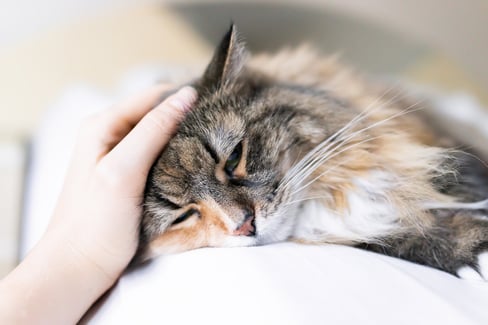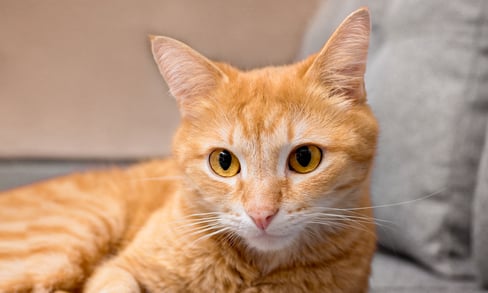Table of Contents
Is your cat acting a little… off?
Maybe instead of jumping onto your lap for pets, he’s sulking in a closet. Or perhaps he’s not playing quite as energetically as he once did.
Indoor cats can live between 13 and 17 years. As they age, cats are prone to developing arthritis, just like humans, which causes joint inflammation and pain.
They’re also notoriously good at hiding discomfort. When you notice your cat acting a bit strange, you serve as the first line of defence to managing arthritis pain.
You may be thinking to yourself, “Get on with it then! What can I do to ensure my furry friend isn’t suffering?” You’re probably also wondering how to identify the signs and symptoms of cat arthritis in the first place.
We’ll cover all that and more in this article.
Keep reading to learn all about cat arthritis and what you can do to ensure it plays as little a role in your cat’s life as possible.
What is Cat Arthritis?
Cat arthritis (osteoarthritis) is a degenerative joint disease caused by the loss of cartilage. Over time, as your cat loses the cartilage that normally cushions his joints, your cat’s bones begin to rub against one another.
Ouch!
This leads to inflammation and pain and is most common in your cat’s hip, knee, ankle, and elbow joints.
Arthritis is most common in older cats, but cats of any age can suffer from it. A study conducted in 2011 identified that 61% of cats older than 6 years old had arthritis in at least one of their joints. That’s a lot of inflammation!
Arthritis can be caused by:
- Natural wear and tear of joints
- Genetics
- Previous injuries
Some cat breeds in particular, like Maine Coons and Burmese cats, are especially susceptible to arthritis due to their size. It’s always a good idea to factor in your cat’s breed when identifying the best ways to take care of your cat’s health, and this is a prime example!
Cats with previous injuries are also more susceptible to developing arthritis. Injuries can cause your cats to overcompensate and use their joints differently than they did before getting hurt.
Cat arthritis is diagnosed by a physical exam at your cat’s vet. Your vet may move different joints to check for pain, as well as feel for any swelling. If necessary, they may also choose to take an x-ray of certain joints to be certain of the diagnosis.
Cat Arthritis Signs & Symptoms
As a loving pet owner, it’s up to you to look out for signs that something’s amiss with your furry friend. The following cat arthritis signs can help you identify if it’s time to visit the vet.
1. Changes in Personality
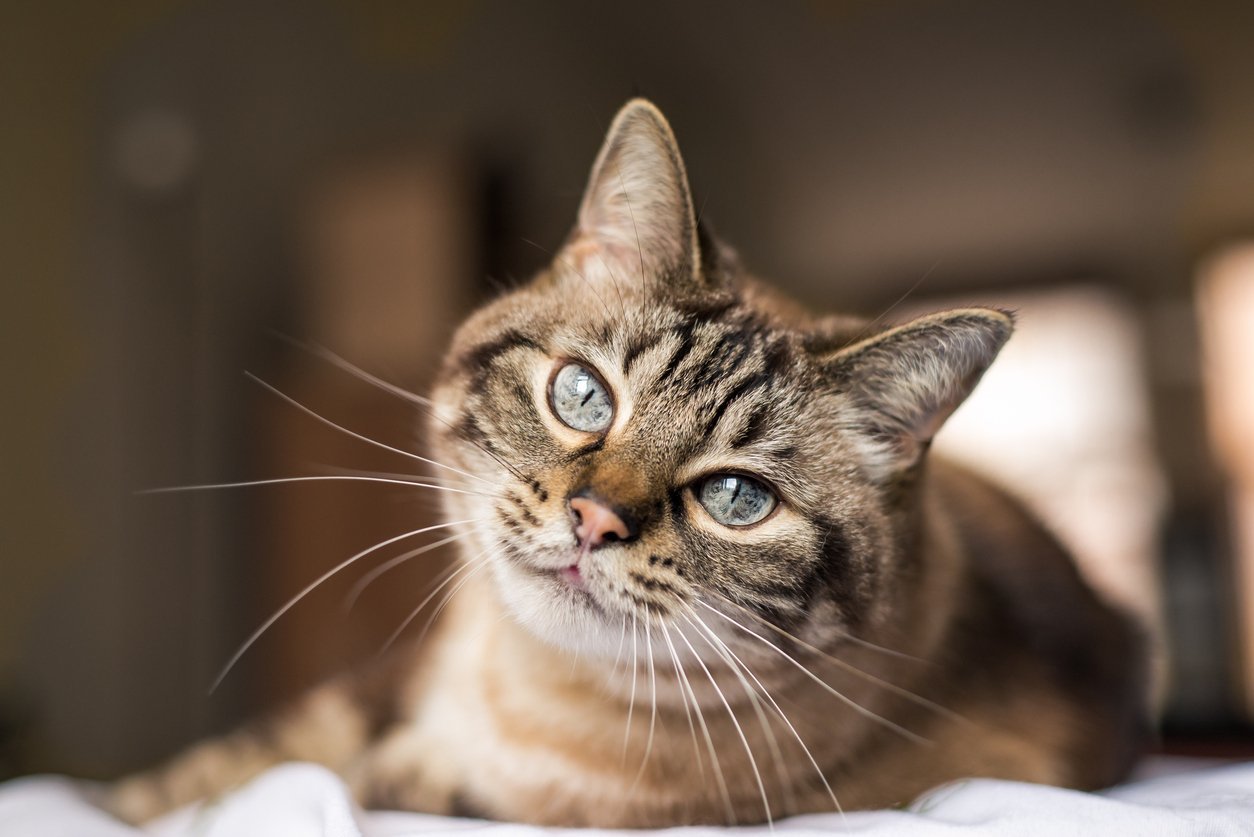
Personality change is one of the tell-tale signs that your cat may be suffering from the pain caused by arthritis. If your people-person cat is suddenly avoiding you like the plague, it could be because he’s trying to nurse his pain in private.
Some biologists believe that cats hide their pain because that’s what they used to do in the wild. Showing signs of pain or weakness could quickly make them an easy target for predators!
Some other signs that your cat may be trying to hide pain:
- Not wanting to be touched or pet
- Becoming more aggressive (biting, scratching, and hissing)
- Sleeping more than usual
- Hiding in hard-to-reach places, like the back of a closet
- Becoming more restless
You know your cat best. If whistle-bells are going off in your mind that something just isn’t quite right, listen!
2. Changes in Mobility
Noticing behaviour change might take a bit of guesswork, especially given how independent cats are.
It’s often far easier to notice if your cat is having difficulties moving from place to place. You might notice your cat isn’t visiting his favourite spot quite as often, especially if that spot is difficult to access.
Alternatively, your cat may be reluctant to leave its favourite place, choosing to sit in one spot rather than engaging in play.
Here are some other signs that your cat may be becoming less mobile:
- Avoiding jumps it used to take in stride
- Limping or lameness
- Taking longer to sit up than normal
- Walking or running slower than usual
- Experiencing a change in gait (for example, moving more stiffly)
Changes in mobility can be caused by many things other than arthritis, so be sure to visit your vet for a diagnosis before assuming your cat has arthritis.
3. Changes in Hygiene
You probably already know exactly how much cats like staying clean. If they’re suddenly looking dishevelled, they may have other things on their mind… like serious cat joint pain.
Maybe it now hurts your cat to bend his legs, so he stops trying to clean all those hard-to-reach places. His coat might lose that sheen you’re used to, or even get matted.
In addition to a change in their coat, cats with arthritis might develop longer nails since they no longer wear their nails down with play and exercise.
Finally, if your cat suddenly stops using the litter box or starts having frequent accidents, this may be a sign of cat arthritis.
Cats with arthritis have difficulty lifting their legs, making it hard for them to access their litter box. As a result, they end up using the bathroom wherever it will cause the least amount of discomfort.
Poor little guys.
Preventative Measures
Since there isn’t a cure for arthritis, preventing arthritis from starting in the first place is the best course of action. Cat arthritis isn’t entirely preventable, but there are some straightforward steps you can take to help slow or delay the onset of cat arthritis.
1. Keep Your Cat at a Healthy Weight
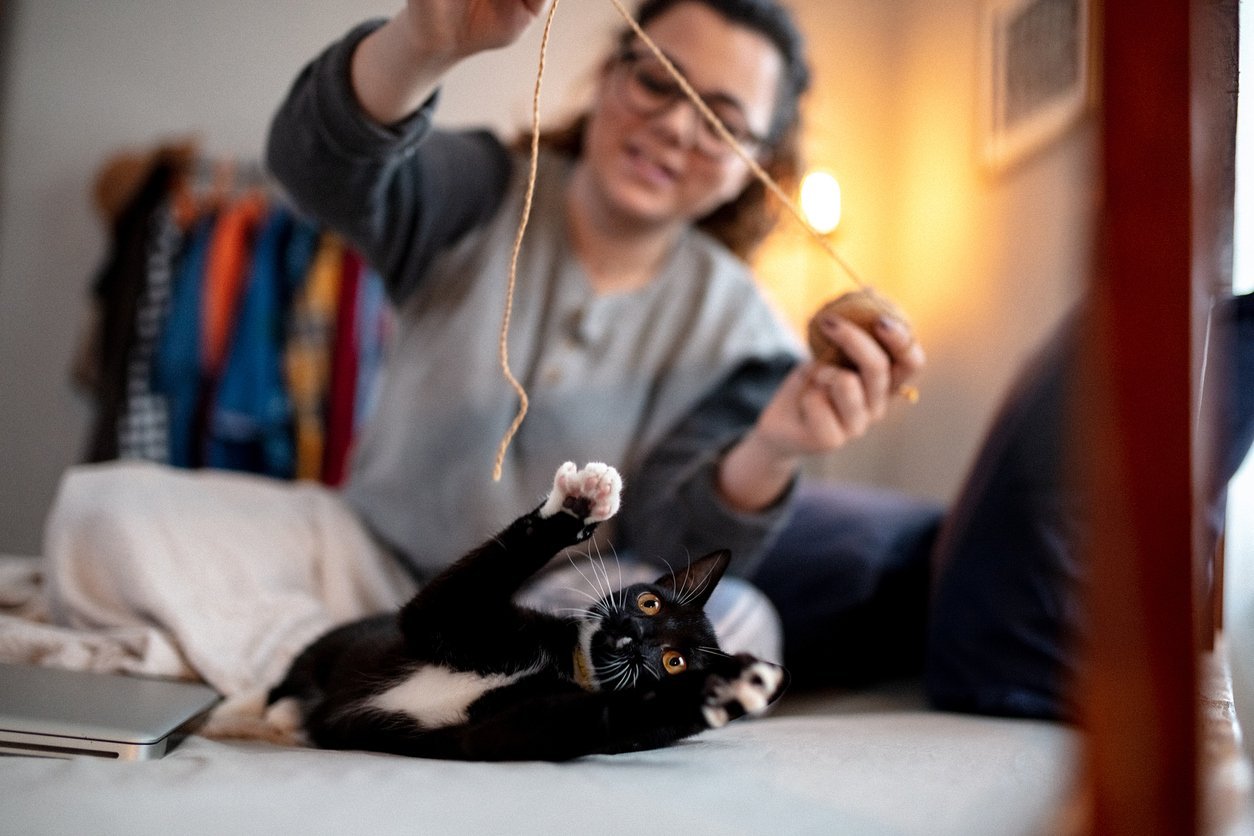
While your pudgy cat may look adorable to you, you’re not doing him any favours by feeding him extra kibble at mealtime. One of the best ways to prevent arthritis is keeping your cat at a healthy weight. Unlike other risk factors, such as genetics, your cat’s weight is in your control.
Keeping your cat at a healthy weight helps prevent cat joint pain because it alleviates strain and pressure on joints. Most cats should weigh between 7-12lbs, depending on the cat’s frame.
Perhaps the most obvious way to keep your cat at a healthy weight is to avoid overfeeding. Some cats can self-regulate their food intake, while others will eat everything you set out. Know which type of cat you have and feed accordingly.
If you have a cat who is slightly overweight or likes to indulge, try to keep mealtimes to twice daily. You can work with a vet to identify the amount of food required to maintain (or reduce!) your cat’s weight.
2. Encourage Exercise
Nobody likes it but everyone’s got to do it: exercise. Aside from helping your cat maintain a healthy weight, exercise is key to maintaining the health of your cat’s joints.
Regular exercise increases blood circulation to stiff joints. This means that your cat’s synovial membrane receives a steady supply of oxygen and nutrients, which helps keep your cat’s joints lubricated.
Exercise also helps keep your cat nimble and flexible, which reduces the likelihood of injuries.
You should aim for your cat to get at least 30 minutes of exercise a day. This might look like playing with your cat to encourage low-impact exercises, such as having him chase a laser light or string.
Alternatively, you could leash-train your cat so you can take them on short walks with you, benefiting both you and your cat. Who doesn’t want to see a cat on a stroll with its owner?
3. Supplement Your Cat’s Diet
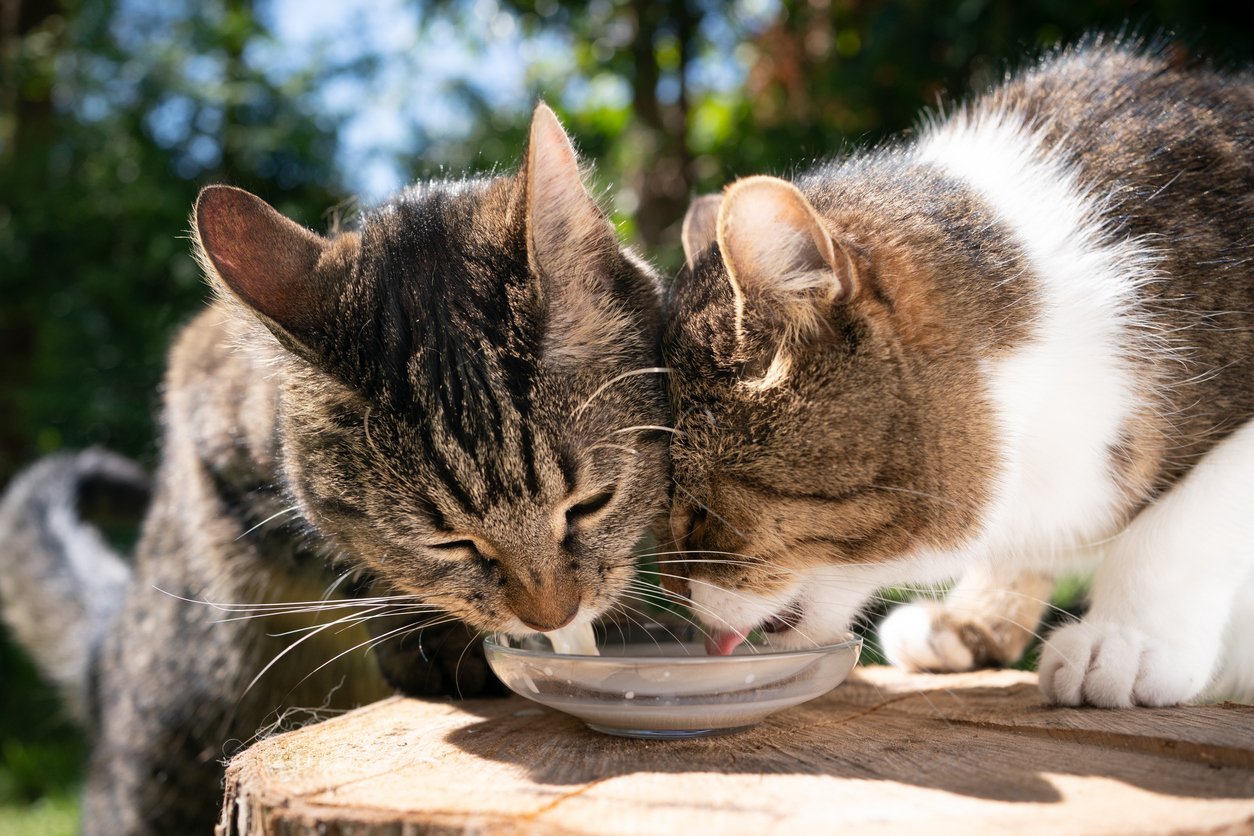
Supplementing your cat’s diet is another way you can help maintain the health of your cat and slow the development of arthritis.
Certain active ingredients provide your cat with nutrients that maintain joint health. The chart below includes key ingredients to look for when searching for the right supplement:
| Active Ingredient | Benefit |
| Glucosamine | Rebuilds lost cartilage |
| Chondroitin | Prevents cartilage deterioration |
| MSM | Reduces cat joint pain |
There are a variety of supplements on the market, so it pays to do your research and find the best supplement for your cat’s needs.
In general, you should aim to find a supplement that has as many active ingredients (and as little filler) as possible. Cat supplements with both types of glucosamine, hydrochloride and sulfate, are especially beneficial.
This is because glucosamine hydrochloride is bioavailable, meaning your cat’s body can readily make use of it. Glucosamine sulfate helps with the production of collagen, which is a key component of cartilage.
Want to know a supplement that’s got all that good stuff? TRI-ACTA for pets.
In addition to containing the active ingredients listed above, this supplement doesn’t contain any fillers.
You can rest easy knowing that every single ingredient is working to maintain your best pal’s joints.
4. Create a Safe Environment
We all know the saying, “curiosity killed the cat.” Cats like to explore, so it’s our responsibility as pet owners to make sure they’re exploring safely.
Providing a safe environment for cats helps them avoid dangerous situations and injuries that may make them more susceptible to developing arthritis down the line. In particular, cats are known to sustain injuries falling from high places, such as off balconies or out windows.
There’s even a name to describe the dangerous (and common) injuries cats often face when such a fall occurs: cat high-rise syndrome.
Let’s try to avoid that.
Block off any areas that are too high for your cat to safely jump from, and be sure to keep your cat indoors and away from open windows. Providing your cat with a cat tree can help satisfy their itch for adventure and height without placing an undue burden on their joints.
5. Get Regular Check-Ups
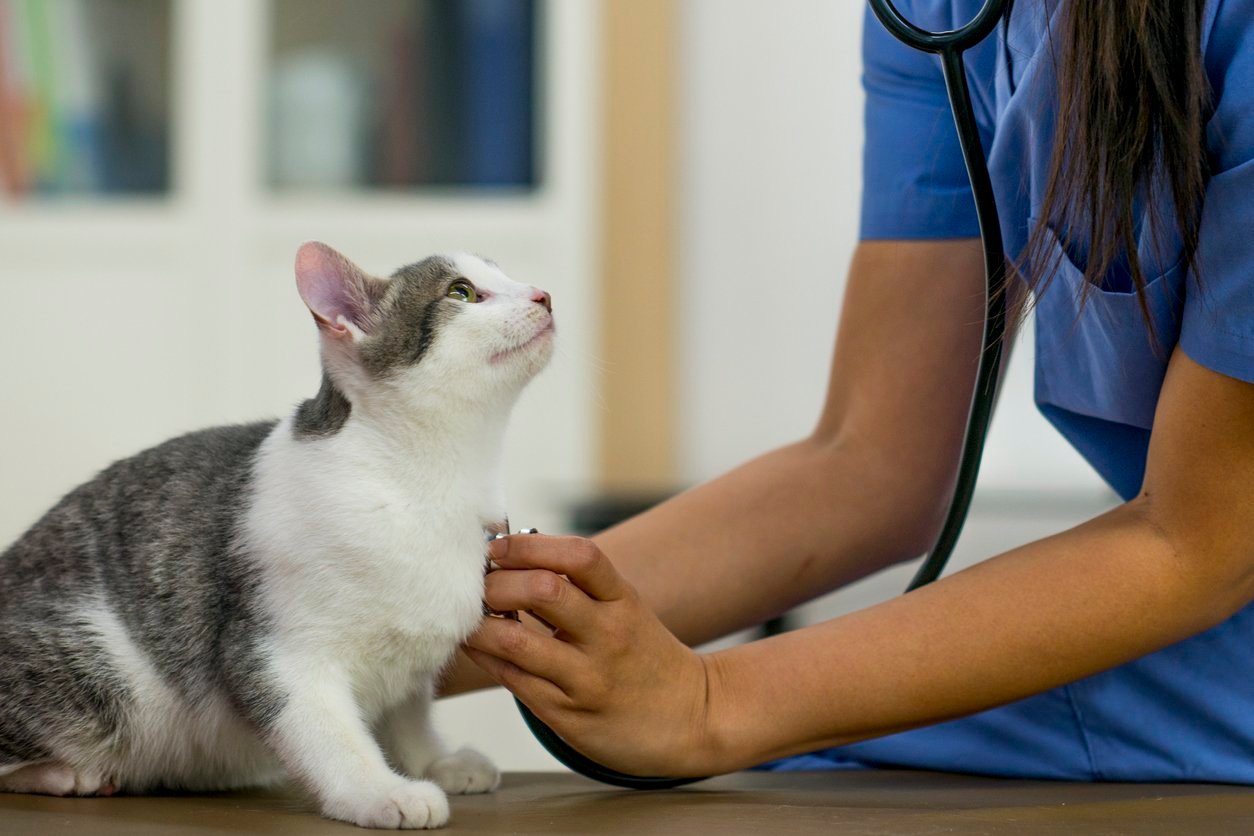
Just like humans, cats benefit from a regular trip to the doctor’s office. You should plan to take your young-to-middle-aged cat to the vet once a year for a check-up. If you have a senior cat, plan to take them to the vet twice per year since they are more prone to health conditions, such as arthritis, as they age.
Their visit may include teeth cleaning and vaccinations, but most importantly gives you a chance to discuss your cat’s overall health.
Regular check-ups can help diagnose any troubling signs and symptoms of joint pain. The earlier you begin to treat your cat’s arthritis, the better you can manage their pain.
Additionally, taking your cat to the vet ensures you are effectively managing their weight. Love is blind, so your vet can serve as an objective third party to let you know if your cat could stand to shed a few pounds.
It’s always a good idea to schedule your next appointment when you’re at your cat’s current one. That way, you never miss your annual check-up.
General Treatment Measures
Work with your vet to identify a treatment plan that works best for your cat’s specific needs. Treatment is largely focused on pain management. Below are some of the things your vet might suggest to help treat your cat’s arthritis:
1. Promote Weight Loss
If you notice your cat has packed on a few pounds, it may be time to put him on a diet. Reducing your cat’s weight helps mitigate pain from arthritis by reducing the overall load on his joints.
This is because certain fats in overweight cats release hormones that contribute to inflammation and pain. When your cat loses weight, it reduces those hormone-releasing fats as well.
After putting your cat on a diet, it may take several months before you notice any change. Don’t get discouraged if this happens!
Losing weight too quickly can be incredibly unhealthy for your furry friend and even lead to metabolic problems.
Take things slowly and work with your vet to create a sustainable weight loss and maintenance program.
2. Feed Your Cat Supplements
We mentioned supplements before when discussing the prevention of cat arthritis. Supplements can also help manage your cat’s arthritis if your cat is already suffering from it.
Vets often refer to supplements as nutraceuticals. Nutraceuticals can be either dietary supplements or prescription food diets that contain active ingredients. You want to find a supplement that includes the following key active ingredients:
- Glucosamine
- Chondroitin
- MSM
- Hyaluronic acid
We discussed the benefits of the first three ingredients above. The newest addition, hyaluronic acid, is vital to supporting your arthritic cat. Hyaluronic acid is found in cartilage and synovial fluid and helps keep your cat’s joints lubricated.
Together, these active ingredients help with cartilage development and maintenance, as well as reduce inflammation and manage pain.
So, where do you find such a supplement? We’ve got you covered.
Meet TRI-ACTA H.A., our maximum strength pet supplement. This supplement contains a higher dosage of active ingredients (and no filler!) to protect your cat against further cartilage deterioration. 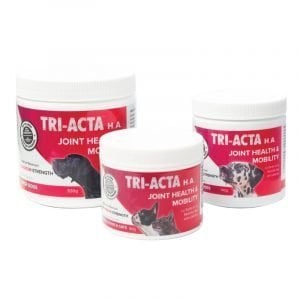
Our supplement also includes hyaluronic acid, which improves the viscosity of synovial fluid around your cat’s joints.
Using TRI-ACTA H.A. to treat your cat’s arthritis is as simple as mixing the recommended dose into your cat’s food at mealtime.
Cat eats food. Cat hurts less. What could be better than that?
3. Make Environmental Modifications
Just as environmental modifications help prevent your cat from developing arthritis, they can also assist your cat in managing pain if arthritis has already formed.
The key to making modifications to your home is thinking about all the times your cat has to bend his joints to accomplish everyday tasks, such as eating or using the bathroom.
By making it easier for your cat to go about his daily life, you decrease the amount of pain, discomfort, and inflammation your cat experiences.
The chart below offers several suggestions for environmental modifications that can help reduce your cat’s joint pain.
| Modification | Reason |
| Install ramps to your cat’s favourite spots. | If your cat likes to sleep with you or sit with you on your couch, installing ramps can help him access comfortable places to sleep without needing to jump. |
| Raise food/water bowls to head height. | This prevents your cat from needing to sit or bend down to access food and water. |
| Create comfortable places to rest around the house. | By providing cushions and cat beds in readily accessible places, your cat can rest in comfort. This may also minimize the likelihood of your cat exploring not-so-safe places. |
| Use a low-sided cat litter box. | Using a cat litter box that has low sides makes it easier for your cat to use the bathroom. This is a win-win, as it also reduces the likelihood he’ll have accidents! |
4. Use Anti-Inflammatories and Pain Relievers
If you have a headache, you might reach for an over-the-counter pain reliever, such as aspirin. Like you, cats also benefit from anti-inflammatories and pain relievers, like non-steroidal anti-inflammatory drugs (NSAIDs).
But wait!
Please don’t give your cat the same medicine you give yourself. It’s very important to consult with your vet before starting your cat on any new medications. What may be a perfect dose for you could seriously harm or even kill your cat.
Now that we have that PSA out of the way…
NSAIDs and other pain relievers help provide cat joint pain relief because they reduce inflammation in the body, a key part of cat arthritis.
Keep in mind that medicines can have side effects such as vomiting, diarrhea, and loss of appetite. All the more reason to consult your vet before administering new medicine to your cat!
5. Get Surgery
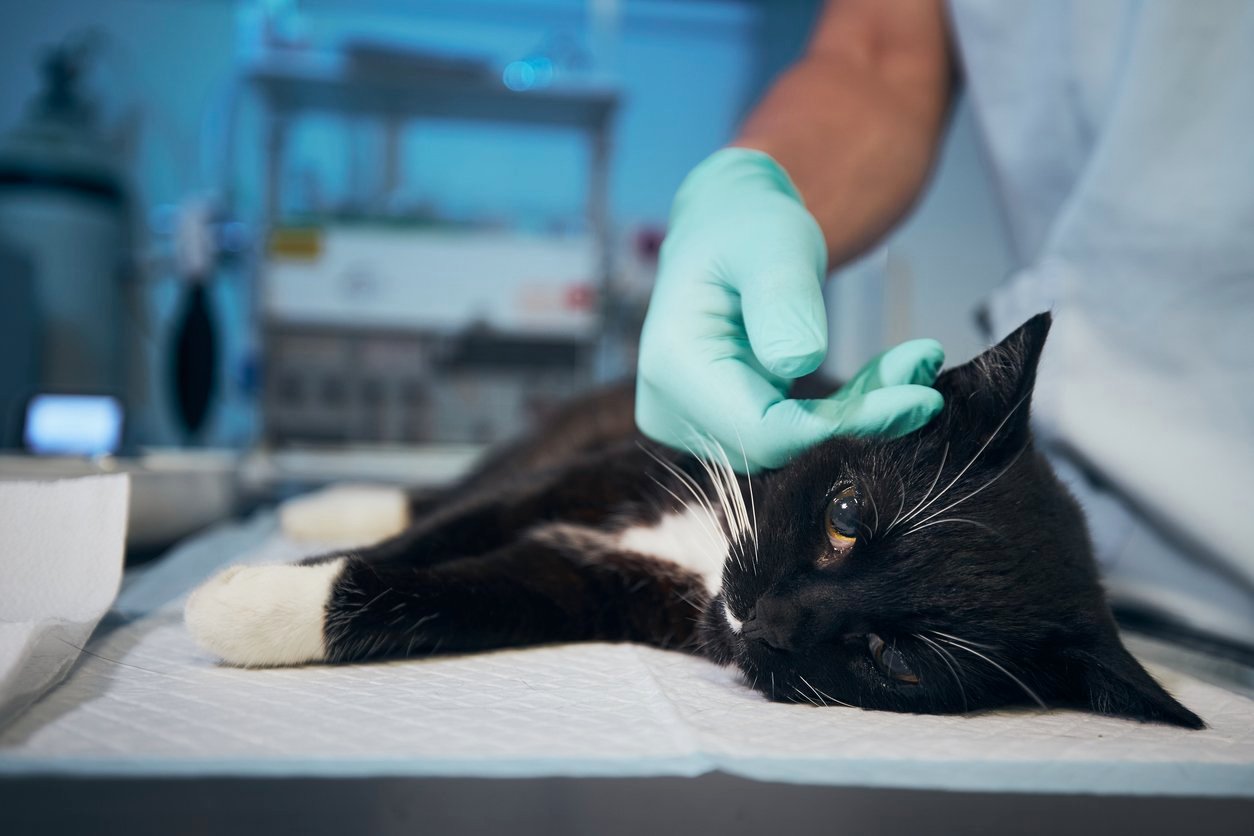
Depending on the cause of your cat’s joint pain and arthritis, your vet might recommend your cat undergo surgery.
Generally, a vet will recommend surgery only for cats who have another medical issue with their arthritic joint, like hip dysplasia or a torn ligament.
Certain medical diagnoses, like hip dysplasia or ligament injuries, are common cat health issues and in some cases may be the cause of arthritis developing in the first place.
As a result, taking care of the underlying condition may help reduce the inflammation and pain your cat experiences from the secondary condition of arthritis.
Sharing a conversation with your vet can help you determine whether surgery is the right option for your cat.
I Have More Questions about Cat Arthritis
What can I give my cat for arthritis pain?
There are both over-the-counter and prescription options to help your cat manage pain from arthritis. Supplements that contain active ingredients like glucosamine, chondroitin, MSM, and hyaluronic acid can be great over-the-counter options to help manage arthritis pain.
Alternatively, your vet may prescribe anti-inflammatory or painkiller medicines, such as NSAIDs, buprenorphine, or tramadol. Always consult with your vet before trying a new medicine to treat your cat’s arthritis pain. These medicines can be very strong!
Can I give my cat glucosamine for humans?
No! You should always feed your cat glucosamine supplements that are specifically made for animals. Glucosamine for humans is difficult for cats to digest. It is also less easily absorbed. Finally, glucosamine supplements for humans may contain ingredients that can be toxic for animals.
Our pet supplements, TRI-ACTA and TRI-ACTA H.A., are great options if you’re looking for a glucosamine supplement to feed your cat.
TRI-ACTA for Pets
A proactive approach for developing and younger adult pets to maintain optimal joint health mobility, minimize inflammation and fend off age-related ailments.
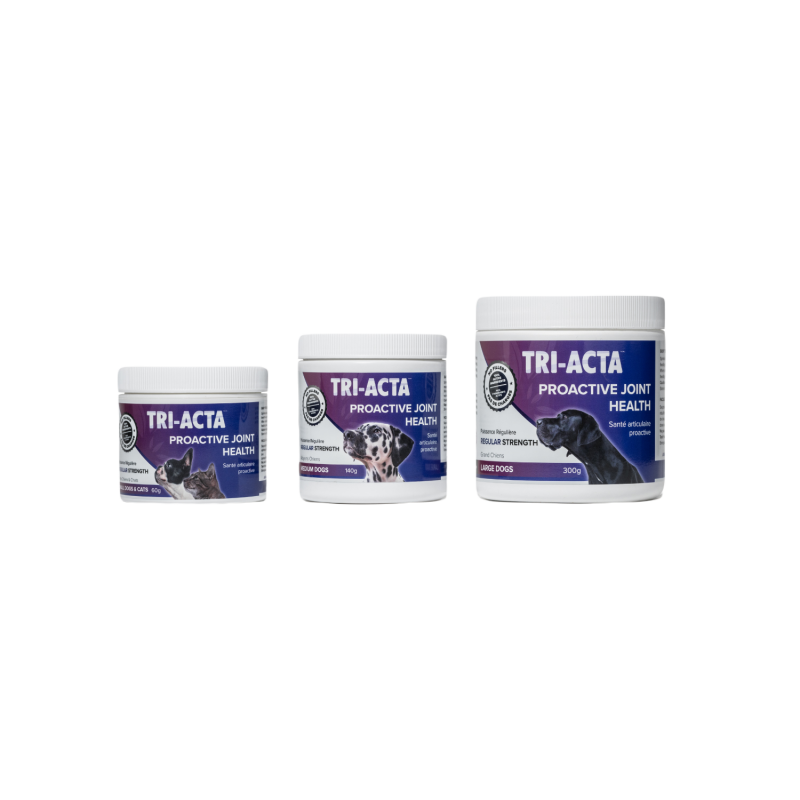
What is the best treatment for arthritis in cats?
The best treatment for cat arthritis is one that uses a comprehensive approach to addressing your cat’s specific needs. This involves considering the cause of your cat’s arthritis, the age of your cat, your cat’s medical history, and more.
Treatment may include supplementing your cat’s diet, making environmental modifications, and in some cases, surgery. You should work with your vet to identify a holistic arthritis treatment plan based on your cat’s specific needs.
How long can cats live with arthritis?
Unfortunately, there isn’t a cure for cat arthritis; however, that doesn’t mean a diagnosis of arthritis is a death sentence! By working with your vet to identify a comprehensive cat arthritis treatment plan, you can manage your cat’s joint pain and keep them comfortable well into their golden years.
Conclusion
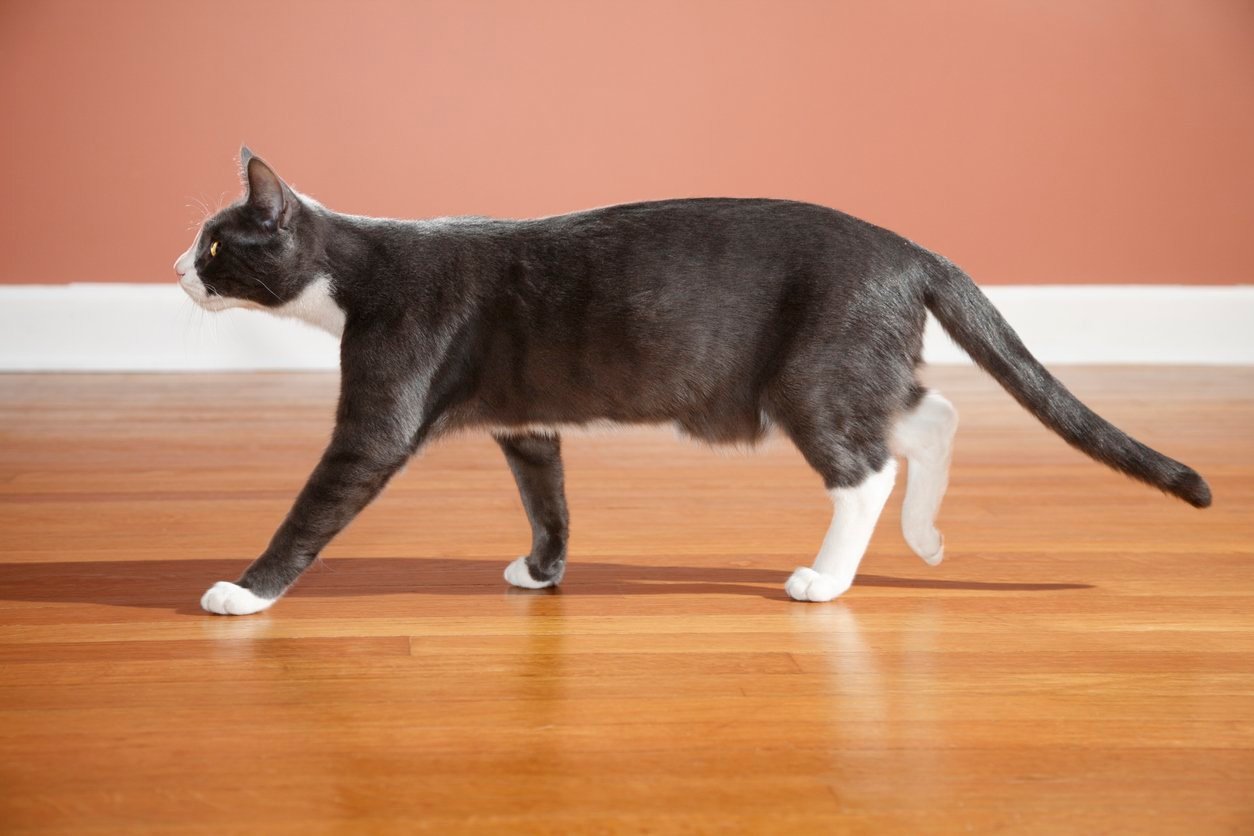
You know your cat better than anyone. If your feline friend starts acting strange, it’s time to pay extra attention to cat arthritis signs and symptoms.
The best way to help your cat is to try and prevent arthritis from forming in the first place. That might mean keeping your cat at a healthy weight (or helping him lose a few pounds) or feeding him supplements that promote healthy joints.
If you notice your cat is in pain, a trip to the vet can help shed more light on arthritis treatment options, like losing weight or using anti-inflammatories.
Arthritis can be a pain, but with a little love and extra care, you can continue enjoying your cat’s company for many years to come!
Newsletter Signup
Subscribe to our newsletter to receive the latest news and exclusive offers.
.jpg?height=2000&name=Cliick_Integricare-DISPLAY-REVISEDV2%20(1).jpg)
Proactive & Therapeutic Joint Supplements
When given daily, Integricare joint supplements recover bone and joint injuries faster and help prevent mobility injuries from happening in the first place.








